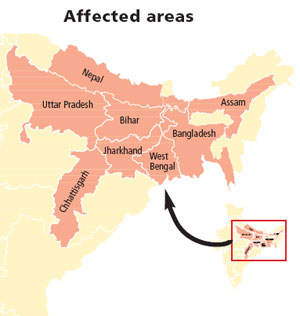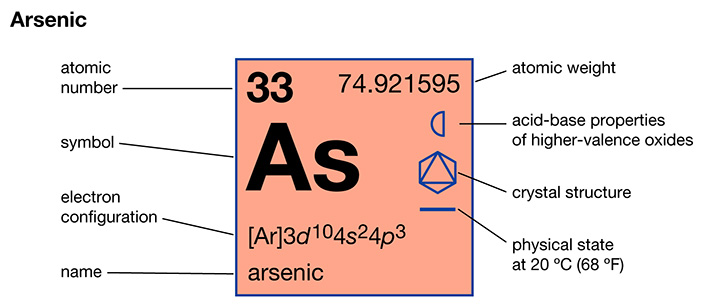Arsenic Contamination of Food Chain | 16 Sep 2021
Why in News
A recent study in Bihar has found Arsenic contamination not only in groundwater but in the food chain as well.
- The research study was a part of the Project Nature and Nurture in Arsenic Induced Toxicity of Bihar jointly funded by the British Council in the United Kingdom and Department of Science and Technology in India.
Key Points
- Major Findings:
- Food Chain Contamination:

- Arsenic has found its way into the food chain - mainly rice, wheat and potato.
- Arsenic contamination in groundwater has been a growing concern in several parts of the country.
- Arsenic is present in the groundwater as it is used on a large scale for irrigation by farmers. That is how it finds its way into the food chain as well.
- Arsenic has found its way into the food chain - mainly rice, wheat and potato.
- Food vs Water Contamination:
- The food had more arsenic content than drinking water, even when arsenic levels in drinking water was above the World Health Organization (WHO) provisional guide value of 10 micrograms per litre (μg/L).
- The concentration was higher in cooked rice compared to raw rice.
- The food had more arsenic content than drinking water, even when arsenic levels in drinking water was above the World Health Organization (WHO) provisional guide value of 10 micrograms per litre (μg/L).
- Food Chain Contamination:
- Arsenic:
- About:

- It is an odourless and tasteless metalloid widely distributed in the earth’s crust.
- It is naturally present at high levels in the earth crust and groundwater of a number of countries. It is highly toxic in its inorganic form.
- Arsenic Poisoning:
- It can get into the human body through drinking water as well as eating food that has been contaminated with arsenic.
- Arsenicosis is the medical word for arsenic poisoning, which occurs due to accumulation of large amounts of arsenic in the body.
- It leads to adverse health effects through inhibition of essential enzymes, which ultimately leads to death from multi-system organ failure.
- Long-term exposure to arsenic from drinking-water and food can cause cancer and skin lesions. It has also been associated with cardiovascular disease and diabetes.
- In utero and early childhood exposure has been linked to negative impacts on cognitive development and increased deaths in young adults.
- Steps Taken: Under the 2030 Agenda for Sustainable Development, the indicator of "safely managed drinking water services" calls for tracking the population accessing drinking water which is free of faecal contamination and priority chemical contaminants, including arsenic.
- Jal Jeevan Mission is envisioned to provide safe and adequate drinking water through individual household tap connections by 2024 to all households in rural India.
- Recently, the Jal Jeevan Mission (Urban) has also been launched.
- About:
Way Forward
- There is an urgent need to monitor irrigation water quality along with drinking water.
- What is required is to make its mitigation a success by involving the public in planning and maintenance, while also giving states the necessary push.
- The remedial measures include a variety of options, ranging from removing arsenic from groundwater after it is extracted, searching alternative aquifers, reducing the level within the aquifer itself, dilution of the contaminants by artificial recharge, blending with potable water etc.
